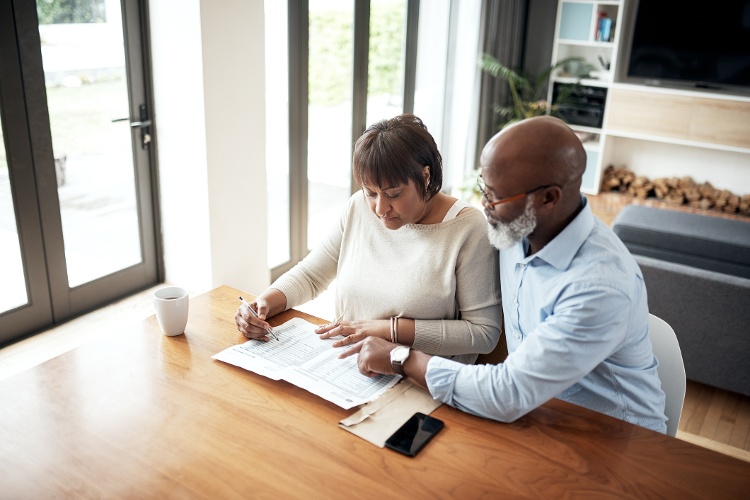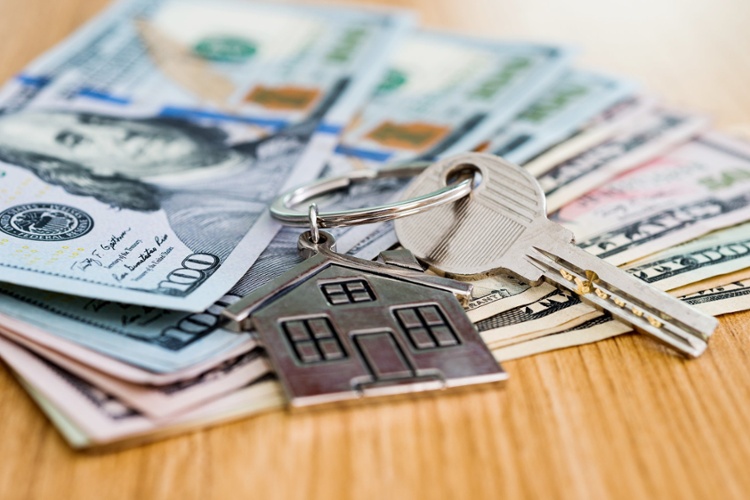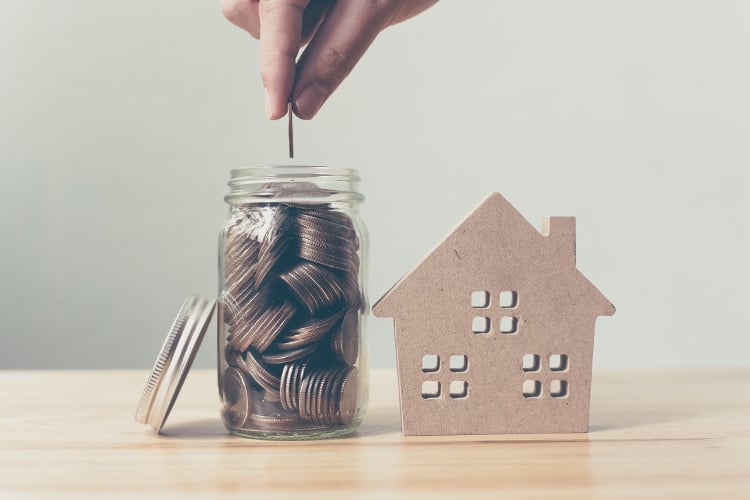Real estate comes with a lot of benefits, but also potential risks, especially for beginning real estate investors. At Roofstock, we want to make sure your first investment experience is as positive and profitable as possible.
Here’s everything you should be aware of before you buy your first investment property.
What The Experts Never Tell You
You may already know that investment property can provide you with regular monthly cash flow and long-term appreciation. You probably also know that even when you use conservative leverage, you don’t need a lot of money to invest in real estate.
However, there are also a few things to consider that the real estate experts never tell you:
- Real estate markets and the overall economy move through normal, predictable up and down cycles. Knowing this helps you to understand how, when, and where to invest in property.
- The longer you hold investment property, the more profitable it will typically be. That’s due partly to real estate cycles, and also due to the long-term effect of property appreciation.
- Real estate is not liquid. It can easily take months to sell in order to make a profit.
- Buying investment property takes time. You’ll need to commit to researching individual real estate markets, and understanding how to use different financial formulas to help predict the potential performance of a rental property.

How to Plan Ahead Before You Invest
Before you buy your first investment property it’s important to prepare both financially and mentally. Whether you plan on being an active or passive real estate investor, a fix-and-flipper or a long-distance owner of turnkey rental property, be sure to keep these important things in mind:
Potential Risks
1. Negative cash flow due to overestimating the fair market rent:To avoid investing in a money-losing property, you can use a simple rental property analysis spreadsheet (like this one) to view the potential financial performance of a given property.
2. Unexpected major repair bills:When you buy a property from a private seller or off the MLS, you run the risk of facing large and expensive repairs. The air conditioning or furnace could go out, or you could have a major plumbing repair that can only be fixed by a high-priced licensed contractor.
To avoid getting caught off guard, set up a capital reserve account for any emergency repairs, or purchase a turnkey investment property that’s been thoroughly pre-inspected and already occupied by a good tenant.
3. Vacancy rate higher than planned:
Sometimes, due to local market conditions, it can take longer than expected to find a qualified tenant. In the meantime, items like landscaping, property taxes, and the mortgage still need to be paid.
When you put together a pro forma financial statement on your first investment property, try ‘stress testing’ it by experimenting with different vacancy rates. Creating different vacancy scenarios will give you a good idea of how much cash you’ll need to hold in reserve if the property sits vacant longer than expected.
Planning Ahead
1. Take care of yourself first:Some beginning real estate investors go “all in” when they buy their first investment property. They scrape together every dollar they have, borrow from friends and family, while leaving nothing in reserve for a personal emergency fund.
While some real estate gurus on TV may encourage you to do just that, the problem is that ‘life happens’ and something could go wrong when you least expect it, forcing you to sell your first rental property at the worst possible time.
So, think of your personal needs first by having 6-12 months in savings, and contributing to an IRA or 401(k). You’ll have the advantage of tax-deferred savings, and as an extra bonus you can set up a self-directed IRA for investing in real estate, allowing you to build a tax-sheltered investment property portfolio.
2. Strengthen your credit score:Most lenders require a credit score of at least 740 in order to give you the best rates and terms for a mortgage on a residential investment property. High credit card balances should be paid down, and ‘dings’ on your credit report should be taken care of before you apply for a loan and make an offer on a rental property.
3. Build your business cash reserves: When you buy your first investment property you’ll need to have money for the down payment, escrow fees, legal fees, and closing costs, and repair or renovation expenses if you’re not buying a turnkey rental property.If you are financing your purchase, some lenders will also require you to hold six months or more of cash in reserve. That way, the bank knows you’ll be able to pay the mortgage in case there is no rental income due to a higher than expected vacancy rate.

10 Steps for Buying Your First Investment Property
Real estate is arguably one of the best investments you can make, provided you follow the right steps:
#1: Ask yourself if you really want to be a landlord
Attempting to manage an investment property on your own takes a surprising amount of time and money. The most successful real estate investors hire a professional property manager to oversee the daily details of each property.
If being a landlord isn’t for you, you can always invest in real estate indirectly through a joint venture, crowdfund, or a REIT.
#2: Get rid of high-interest personal debt
Credit cards, medical bills, and auto loans can take a surprisingly big bite out of your personal cash flow. While some debt isn’t always avoidable, you don’t want to be in a situation where you have to choose between paying the loan on your investment property or a credit card.
#3: Save for your down payment
Lenders usually require a bigger down payment for an investment property. There are a couple of advantages to putting more money down.
First, you’ll receive a better interest rate and loan terms. Secondly, you’ll have more free cash flow due to a lower mortgage payment. In most cases, using a conservative LTV ratio (loan to value) of 75% by making a 25% down payment gives you enough equity and cash flow to generate a healthy and safe return on your investment.
#4: Build up your cash reserves
In addition to your down payment and closing costs, you’ll also need to hold cash in reserve for unexpected repairs or reduced rental income due to a higher than normal vacancy rate.
You can build up your reserve account over time by contributing a fixed percentage of your cash flow each month into a special capital reserve account.
#5: Consider long-distance real estate investing
Your first investment property doesn’t have to be in the same city that you live in. In fact, there are plenty of real estate investors who live and work in high-cost markets but invest long-distance.
The Roofstock marketplace is a good place to look for single-family and small multifamily rental properties in attractive markets across the country.

#6: Compare paying all cash to financing
Even though the housing market is still going strong, there are plenty of good investment properties on the market priced at less than $100,000.
Sometimes, you’ll need to move fast to get the best deals. If you decide to pay in cash (or make an extra-large down payment to speed up your loan approval) you can always refinance at a later date to pull out some of your original cash.
If you are financing, you’ll need to get pre-qualified for a loan before you make an offer on an investment property. Items you lender will look for include:
- A credit score of at least 680
- Job history over the last two years plus tax returns, and up to five years if you are self-employed
- Cash on hand for the down payment
- Detailed list of all assets and liabilities
- Low debt to income ratio (DTI) of 36% or less (although some lenders may accept a much higher ratio)
#7: Develop your local real estate team
Finding and buying your first investment property is much different from buying your own home. You’ll need to develop a real estate team made up of professionals who understand how income property works.
Key members of your local real estate team can include a real estate agent who works with investors, a local lender and attorney, and a good property management company with an established network of cost-effective service professionals.
#8: Analyze each market on a macro level
Some markets are better than others for investment property. Factors that make a place “good” for rental property include:
- Population growth
- Employment growth and a low unemployment rate
- Median household income levels
- Percentage of renter-occupied households increasing
- Vacancy rates and median rent trends
- Growth of housing prices
- Neighborhood rating
- School rankings
- Crime rate
If you’re looking for some extra help on selecting a market, listen to this recent podcast episode where our team does a deep dive on this topic:
#9: Master the art of financial analysis
After you’ve narrowed down a market to invest in, the next step is to analyze the potential financial performance of several investment options. By comparing different properties to one another, you’ll gain a better feel for which property is best for you.
Start by creating a proforma statement for each property. Begin with the property gross income, then subtract the vacancy and bad debt expenses, recurring operating expenses such as landscape and maintenance, property management fees, and your mortgage payment to arrive at your net cash flow.
Other calculations you can use to analyze the potential financial performance of each rental property include:
- Cap rate is a percentage that compares the property net income (excluding the mortgage payment) to the market value: Cap rate = NOI / Market value
- Cash-on-cash return is a ratio that compares the cash received to the cash invested: Cash-on-cash = Cash return / Cash invested
- 1% rule compares the gross monthly rent to the total cost of the property, where the higher the ratio is above 1% the better: Rent ration = Monthly rent / Property cost
#10: Take the leap!
You can read books and listen to podcasts until you’re blue in the face, but at some point, you’ll have to take the leap and make that first offer.
Many first-time investors choose to buy a turnkey property, meaning the property has been recently rehabbed and is rent-ready. In fact, many of the properties (like the ones listed on Roofstock) already have the tenant in place so you have cash flow on day 1.
You can also always choose to take on a rehab if you feel comfortable taking on a project.
.jpg?width=2121&name=iStock-1174262839%20(1).jpg)
Final Tips to Help You Buy Your First Investment Property
There are an almost countless number of benefits to owning investment property. Tenant rents pay for your operating expenses and mortgage, with any remaining cash flow left over as profit. Property depreciation can then be used to reduce your amount of taxable net income, sometimes even to zero (even though you actually earn a cash profit).
Investment real estate is also a great way to diversify your investments, save for retirement with a self-directed IRA for real estate, and build your wealth over the long term. Of course, each advantage comes with potential drawbacks as well.
In order to make your first investment property as profitable as possible be sure to:
- Accurately calculate repairs and ownership costs, property values, and fair market rents
- Focus on cash flow first and appreciation second, unless you’re investing in ‘cash cow’ rental real estate
- Understand that ongoing ownership costs include not just your mortgage, but also expenses such as leasing and property management, recurring repairs and landscaping, and property and rental taxes
- Avoid getting emotional – when you’re buying your own home, it’s alright to care about things like paint color and carpeting, but always remember that investment real estate is strictly a numbers game
- Remember that turnkey single-family houses and small multifamily property are already rented to qualified tenants, so your cash begins flowing the day you close escrow









